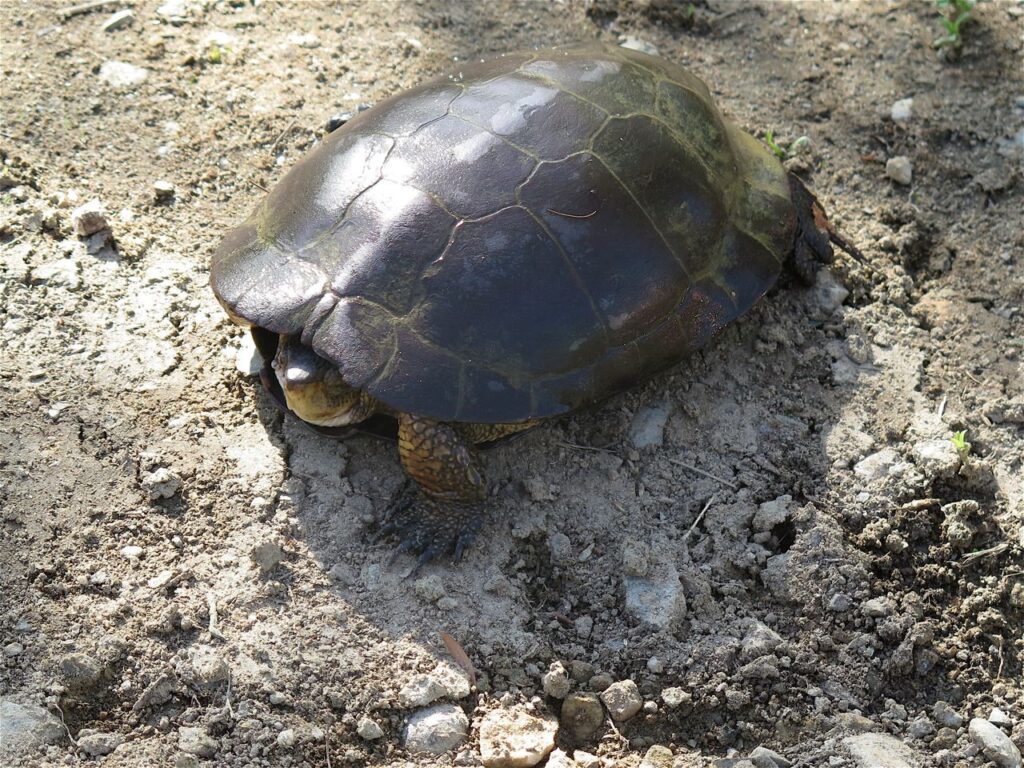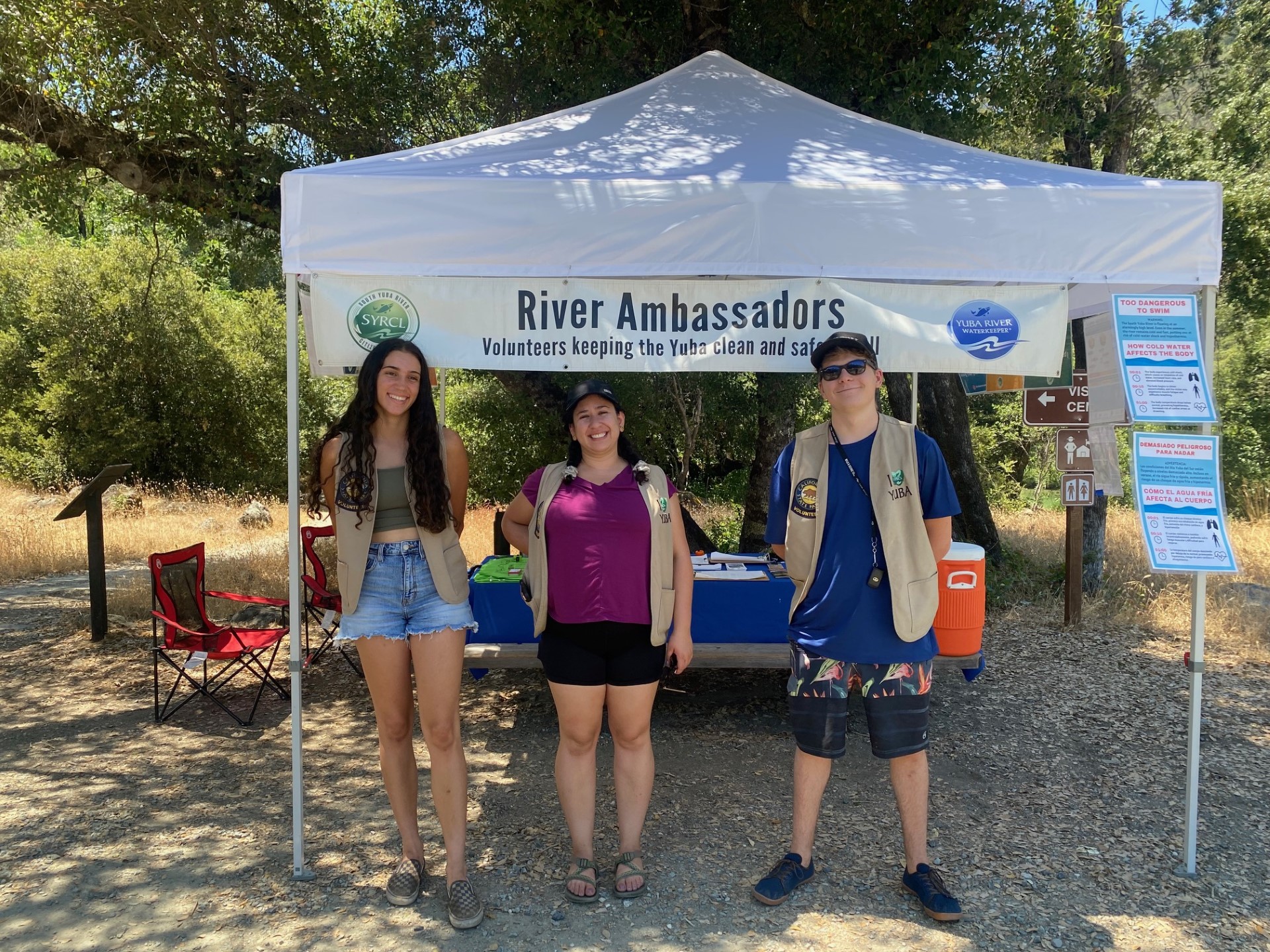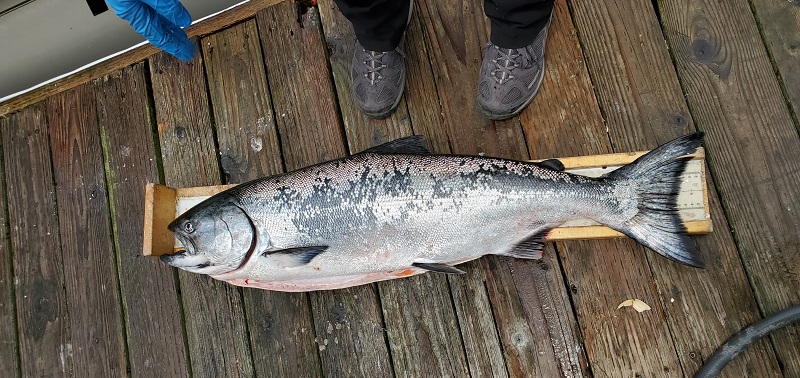What is the Yuba River’s Only Native Turtle up to?
While you may have seen them out and about already (perhaps on the hunt for a mate) summer is the time northwestern pond turtles are searching for nesting sites. If you see one, it is best to just watch from afar. Read on to learn more about the Yuba River’s only native species of turtle.
Though their name indicates otherwise, northwestern pond turtles (Actinemys marmorata), are found in a variety of freshwater environments, including ponds, lakes, streams, rivers, and even irrigation ditches. They like to be in close proximity to basking areas such as logs or rocks, which help turtles to regulate their body temperature, as they spend most of their time in the water.
What do they eat?
As omnivores, northwestern pond turtles seek out freshwater habitats with abundant vegetation. The aquatic plants that make up a large part of their diet also provide refuge to a number of other food sources such as invertebrates and tadpoles, thereby creating the perfect hunting and foraging grounds for a hungry turtle.

Why leave the water?
Northwestern pond turtles do not leave the water often, but may be found on land for several reasons. The majority of the time turtles on land are moseying around searching for better food sources or habitat. From March through June, turtles you see out of the water are on a mission: creating offspring. Turtles do not reach reproductive maturity until they are between eight and twelve years of age.
By May, most northwestern pond turtles have found a mate. While the males return to their home pond, females must find a place to dig a nest. They tend to choose nesting sites in full sunlight, and may go up to 90 meters from the water’s edge to find a suitable location. Female pond turtles then deposit 2-11 eggs in the nest before burying them and returning to the water.
When the baby turtles hatch, their shells are only about one inch in length. Though they sometimes emerge in the fall, most hatchlings stay in the nest until the following spring.
Turt-ally Cool Facts About the Northwestern Pond Turtle

They develop growth rings on the underside of their shells as they age.
As pond turtles grow, an annulus, or growth ring, is deposited on the scutes of their plastron approximately every year. Scientists can use these annuli to estimate the age of the turtles until they are full grown, normally with a cap of 12 visible growth rings.

They go dormant during unfavorable climate conditions.
Some pond turtles aestivate in the winter or during drought, which means they bury themselves in muddy pond or creek bottoms. They slow their metabolic processes and remain inactive until environmental cues indicate more favorable conditions.

They can “breathe” through their rear ends.
The process of cloacal respiration allows pond turtles to pump water through their cloaca over tons of small blood vessels where gas exchange occurs through diffusion. This allows pond turtles to still get oxygen without using their lungs during aestivation.
Northwestern pond turtle populations have been in a steady decline throughout 75-80% of their range due to habitat loss and degradation, and competition with invasive species. The California Department of Fish and Wildlife has listed the turtles as a Species of Special Concern, meaning it is at risk of becoming listed at the state or federal level of the Endangered Species Act. All turtles in the featured photos were handled under the proper scientific permits. If you encounter one while exploring the Yuba, take a moment to appreciate that you got to spend that part of your day with the Yuba’s only native turtle.
Did you enjoy this post?
Get new SYRCL articles delivered to your inbox by subscribing to our ENews.




